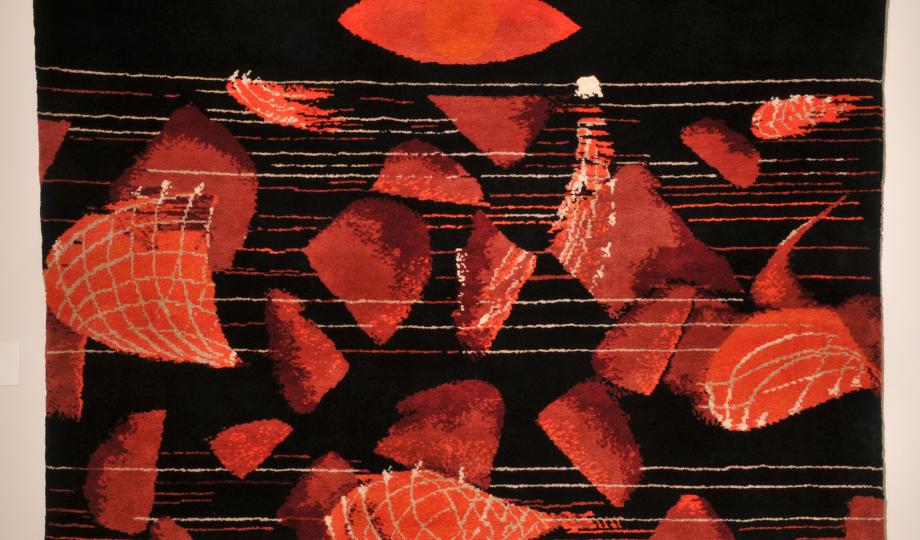Max Ernst
1963
Tapestry weaving is an ancient decorative and practical art form. Recognizing the aesthetic value and expressive potential of tapestry weaving, French arts patron Marie Cuttoli sought to revive the craft in the early-20th century. She successfully modernized tapestry weaving by pairing the designs of influential artists like Picasso and Miró with the skill of master craftspeople in Algeria and France. Commissioned by Cutolli, this tapestry was designed by Max Ernst and produced by Parisian weavers in 1963.
Max Ernst was a German painter, sculptor, graphic artist, and poet. He was an artillery officer in WWI, but still managed to paint. During the Second World War he was saved from the Gestapo with the help of Peggy Guggenheim, whom he briefly married. A prolific artist, Ernst was a primary pioneer of the Dada movement and Surrealism. His Dada collages and photomontages were ingeniously arranged to suggest the multiple identity of the things depicted. Ernst used several different techniques including frottage (pencil rubbings) which provided him with a means of evoking hallucinatory visions, and decalcomania, (the technique of transferring paint from one surface to another by pressing the two surfaces together). In later life Ernst created more sculpture and was less experimental. Significant collections of his work are held at the Solomon R. Guggenheim Museum, the Museum of Modern Art in New York City, and the Tate Gallery, London.
Currently on display at Cambridge Public Library, Queen's Square, second floor.

